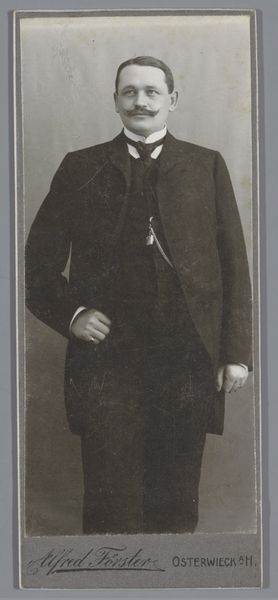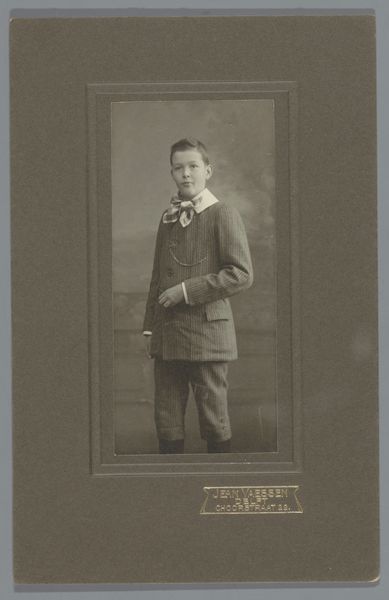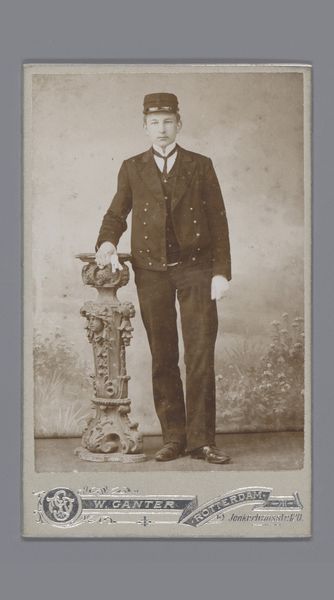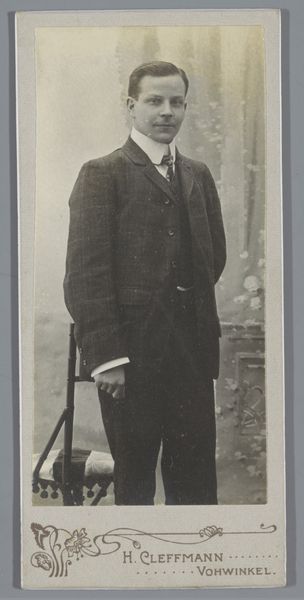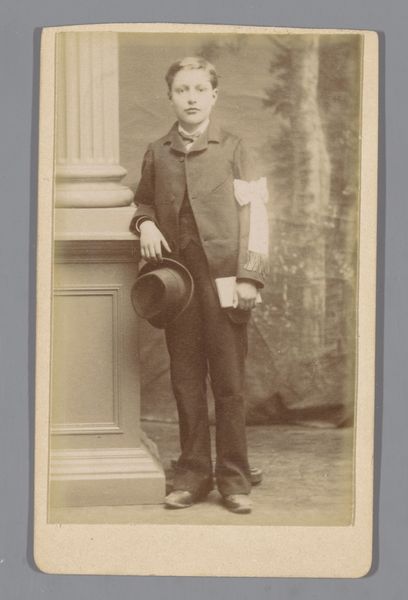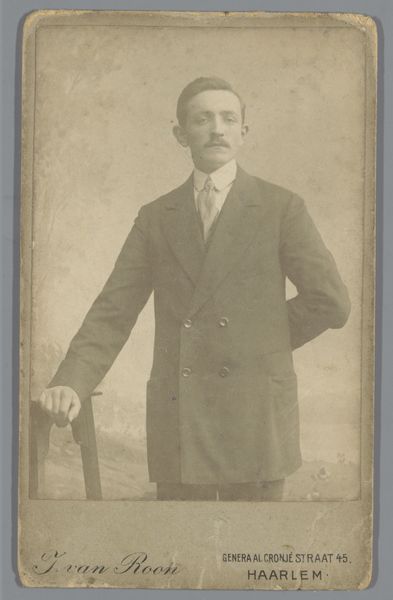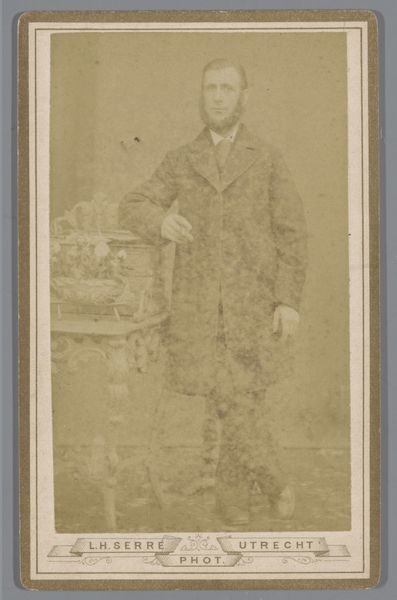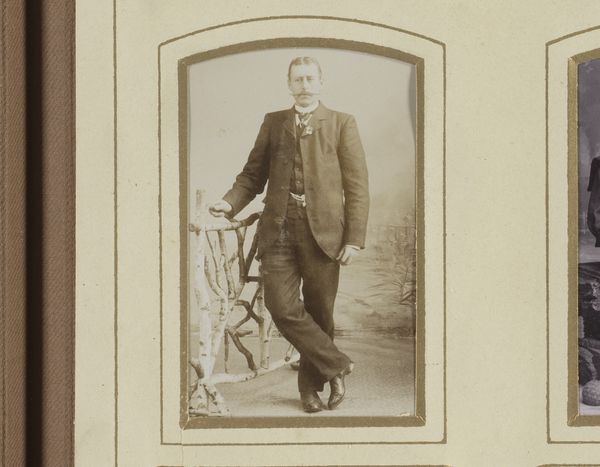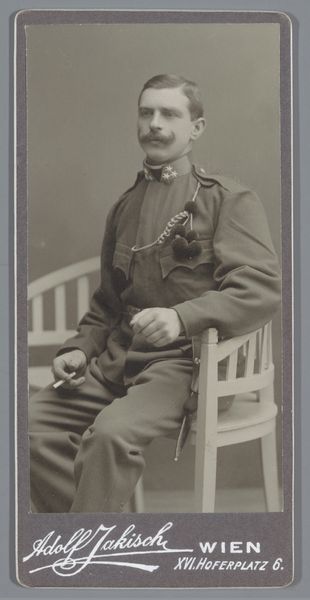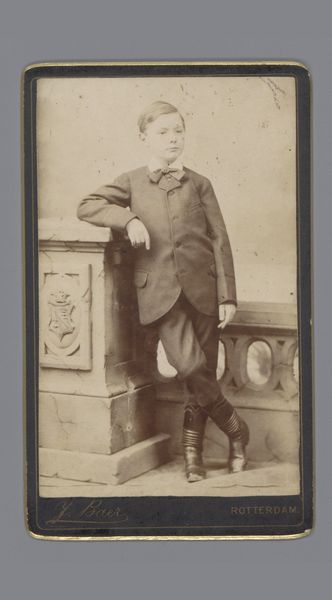
photography, gelatin-silver-print
#
portrait
#
portrait image
#
photography
#
historical photography
#
gelatin-silver-print
#
realism
Dimensions: height 118 mm, width 49 mm
Copyright: Rijks Museum: Open Domain
Editor: We’re looking at a gelatin silver print titled “Portret van een onbekende jonge man,” potentially from 1906 by Strauss & Co. It has this incredibly formal feeling. What immediately strikes me is the almost severe composition – the verticality and how the man is positioned so centrally. What do you see when you look at this portrait? Curator: Indeed, the verticality is key. It accentuates the figure’s upright posture, almost a self-conscious attempt at conveying dignity. Note how the limited tonal range, the gradations within the sepia, emphasizes texture and form. The suit, for instance, is rendered almost sculptural through light and shadow. How does the photographic process itself – the gelatin silver print – contribute to your interpretation? Editor: I guess I hadn't really considered the photographic process itself as part of it. But it’s interesting you say that it’s "sculptural." It has this sharpness to it that makes you aware that it's not trying to be painterly or soft. So you mean how that crispness gives a formality too? Curator: Precisely. The inherent detail afforded by the gelatin silver process—the almost forensic rendering of fabric and feature—it lends an undeniable verisimilitude, creating a distance for us. And this distance shapes the aesthetic. How would the image change were it rendered in a softer, more overtly manipulated fashion? What is the significance of the surface abrasions across the print? Are they detractions, or do they amplify the sense of time passed and the photographic medium itself? Editor: That's a great question; I think it highlights the layers, as you suggest. Both the material and the image represent passing of time, like material evidence of the 20th century. Curator: Exactly, by shifting our perspective, this is one way that these qualities open new appreciation of this photograph. Editor: I’ll definitely think more about that connection between material, method and the impact of the piece from now on.
Comments
No comments
Be the first to comment and join the conversation on the ultimate creative platform.

